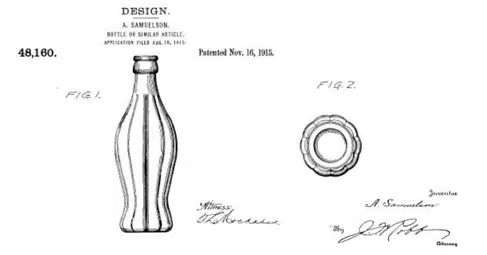Utility patents get all of the publicity when discussing innovation. This could be changing with Apple’s $539 million verdict against Samsung, which was based in large part on infringement of Apple’s design patents (the original jury verdict in the case was $1.05 billion).
Another option that an inventor may want to consider is a design patent. Utility patents cover structural and functional aspects of an invention, while design patents cover the aesthetic features.
What Designs Can Be Patented?
Design patents differ from utility patents in a number of basic ways. A design patent is granted to cover the ornamental design of an object that has practical utility. For example, a design patent may be obtained for a new shape of a beverage container, the particular shape and features of the tread of a shoe, computer icons, and other items that have practical utility.
A design patent is not permitted for something that exists for purely aesthetic reasons, such as a work of art. A painting, sculpture, or other work of fine art would be protectable by copyright and possibly other intellectual property rights, but would not be eligible for design patent protection.
Design Patent Requirements and Advantages
The requirements for obtaining a design patent are similar to that for utility patents. The design must be novel and non-obvious; the examiner will perform a search of the prior art to be certain that the design meets these requirements. Furthermore, the drawings of the patent application must clearly show the features sought to be protected by patent. The drawings will typically be more detailed than in a utility application as they will often show more views of the invention, often including a perspective view and a view showing each surface of the object. Because they don’t require a detailed specification like a utility patent, design patents are also less costly to prepare and file.
The drawings constitute the claims of the design patent. Thus, any accused infringing product will be compared for its similarity to the drawings of the design patent to determine infringement.
Design patent protection lasts for 15 years from the date the patent issues compared to 20 years from the earliest filing date for a utility patent. No maintenance fees are required for design patents.
Another advantage of design patents over utility patents is that they seem to be much easier to obtain. Design patents have had an allowance rate of over 85% over the last few years, compared to utility patent allowance rates that are lower. In fact, many design patent applications are allowed without rejection which very rarely happens in utility patent cases; and a very small number of design patent applications are rejected based on prior art. If any rejections are made, they typically arise based on formality grounds.
Consider Both a Utility and Design Patent
An invention may be entitled to both a utility patent and a design patent since a utility patent protects the structure of an article and the way it is used and works; a design patent protects the way an article looks. If the design–the way the article looks–is dictated primarily by the article’s function, it would not properly be the subject of a design patent. An example may be the shape of a gear that is designed primarily to fit with other gears and not for aesthetic purposes.
For an invention where design and utility patent protection are both appropriate, inventors should not skip the utility patent in thinking that only one type of patent is necessary. While design patents are quicker to obtain and provide some protection for the invention, small changes to the design can render the accused product to look different enough from the drawings of the design patent to avoid infringement. Because utility patent claims are described in words, it is not as easy for small changes to avoid infringement. Thus, both types of patents should be obtained where appropriate for the invention.
An inventor should at least file a utility application for its broader scope of coverage and should also consider a design patent. A design patent would provide some protection while waiting for a utility patent to issue. They are also cheaper since they don’t involve a great deal of preparation and prosecution. Inventors should always consider whether their inventions are eligible for design and utility patent protection.
This blog is made available by Goodman Allen Donnelly for general information, and does not constitute legal advice. By reading this blog, you understand that there is no attorney-client relationship between you and the firm. This blog should not be used as a substitute for competent legal advice from a licensed professional attorney in your state.

